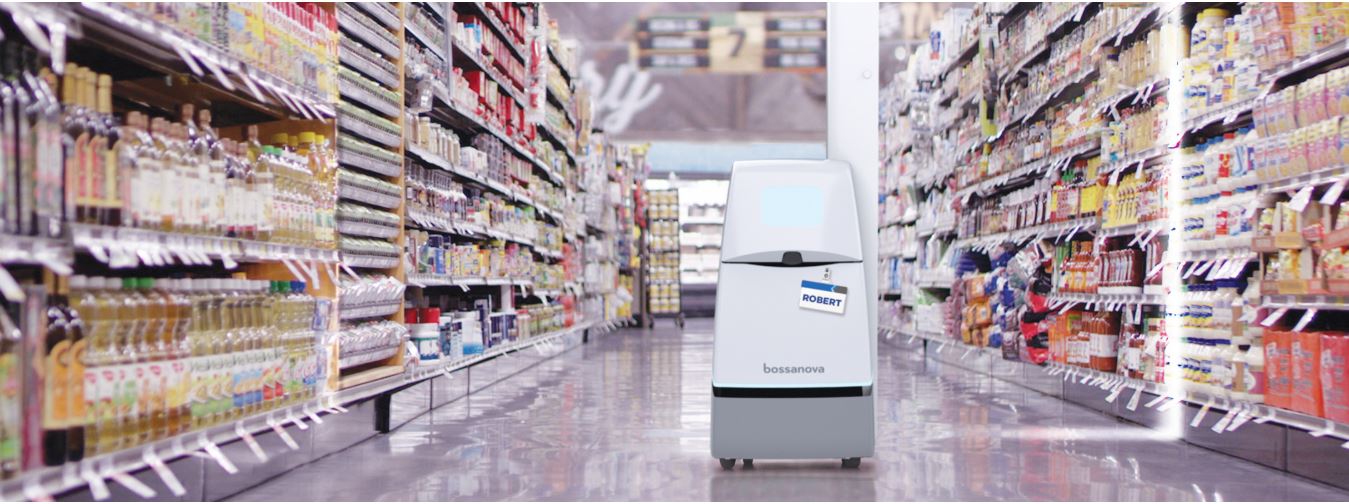CAV Canada 2019
Upcoming AV-Related Events
Register by August 6th and save $75 … that is 43% in SAVINGS!
From the Editors Large fleets of ride-sharing AVs are inevitable and will likely dominate mobility in our cities in about 15 years. Despite our current love of the private car, future AV fleets (not just cars, but many types of passenger vehicle modes from ultralight to large buses) will replace them. Why? Money and capitalism. How? Several ways. Moving people in AVs will create large revenues, but a small profit margin, if any. But the owner of a fleet of AVs will own the data – and these vehicles will see EVERYTHING around them and can monetize that data in so many ways. Just like our phone apps, the data revenue will be almost endlessly scalable – if you own the data flow, which means you must own the vehicles to make the most money. How many automakers are looking at selling private AVs as their principal business model? Not GM, not Ford. They want to sell a robotaxi service first – just like Waymo, Uber, Lyft and Zoox. Even if private AVs are sold, then investors will simply buy their own AV fleet and put them to work making money. If an employer is serious about health and safety, then they (or the law) will insist that employees use an AV fleet for their work transportation as it will be safer and more efficient than human driving. One perk for employees could therefore allow personal use of the company AV fleet. Our conclusion is that large fleets of ride-sharing AVs are inevitable. This could be critical in determining how rapidly AVs are deployed and affect our cities and many business models. CAVCOE proposes to further explore this topic and is looking for interested partners to fund this research project. Other Canadian AV News Ottawa-based BlackBerry QNX has had a successful commercial relationship with South Korea’s LG Electronics over the past 15 years. Recently, the two companies announced an expansion of this relationship by deploying BlackBerry QNX technologies in the next generation of connected and autonomous vehicle products manufactured by LG for multiple automotive OEMs. More information is at this link. Canadian engineering firm Stantec has assisted the City of Montreal with its first autonomous electric shuttle pilot project. The main purpose of this project is to assess this technology’s potential for sustainable public transit in Montreal. Services provided by Stantec includes route analysis and optimization, design validation for vehicle-infrastructure communications, and installation of temporary traffic lights. More information is at this link. International AV News It had long been rumored that Apple was making a serious effort to enter the autonomous vehicle industry. Towards this end, Apple agreed to buy the distressed firm of Drive.ai which was in deep financial trouble and was about to shut down. Drive.ai was a startup created in 2015 and had some early successes in getting its AVs deployed in some jurisdictions. Through this acquisition, Apple gains access to Drive.ai’s technology and retains a number of its key people. More information is at this link.  Developments in self-driving cars (SDC) are of interest to many businesses and organizations including The World Economic Forum (WEF). In a recent statement, WEF expressed some opinions on what it takes for SDCs to succeed. One key point is how companies in this space can make money at this game, i.e. business models needed to make SDCs commercially viable. More information is at this link. It is generally believed that the low-hanging fruit in the autonomous vehicle space are in less challenging environments, such as mining sites, farms, construction sites, and other geo-fenced areas. The same applies to a lesser degree for automated trucks driving on highways free from traffic controls such as traffic lights, stop signs and other road users such as pedestrians, bikes, etc. In addition, mining, agricultural and construction vehicles are not as cost-constrained as passenger cars. The price tags for some of Caterpillar haulage trucks exceed US$5,000,000. These vehicles are equipped with rugged LiDAR, radar and cameras and other equipment which are easier to cost-justify when the machines are so expensive. A better business case and ROI can be made for these types of AVs; this has made them attractive to mining, construction and agricultural companies. More information is at this link. A company making inroads in store automation is Bossa Nova. This company has developed slow speed robots to move up and down aisles in stores and scan the shelves for missing products and inventory. This frees up store staff from this tedious and repetitive task. Walmart has deployed these robots at a number of its stores in Florida and California. The company has managed to raise US$70 million so far in funding for software research and development, hiring and international expansion. More information is at this link.  Volkswagen and Ford have announced they will work together on developing self-driving and electric cars in an attempt to reduce costs on new technologies. VW plans to invest US $2.6 billion in Ford's self-driving unit, which is currently valued at US$7 billion. This investment will make VW an equal stakeholder in Ford's self-driving cars unit, while Ford will get access to VW's electric vehicle technology. In a surprise move, VW also announced the termination of its collaboration with the self-driving startup Aurora. More information is at this link. The dream of a flying car has been around for a long time. One of the latest to join the fray is the U.S.-Israeli firm NFT. The vehicle under development (ASKA) runs on rechargeable batteries with a range extender (hybrid) propulsion system. Flying range is 350 miles (563 Km) and the driving range is about 100 miles (161 Km). It is designed to accommodate up to 3 people and is the size of a standard SUV. The company’s long-range goal is to make ASKA fully autonomous in the air and on the road. More information is at this link and NFT’s own site at this link. The Utah Department of Transportation (UDoT) has partnered with Panasonic to accelerate development toward a statewide system for collecting, monitoring, and sharing connected and autonomous vehicle (CAV) data. Self-driving cars are going to need smart highways in order to fulfil their promise of operating more safely. In the first phase of this new US$50 million project, equipment will be installed at 40 sites and in a fleet of 30 state-owned vehicles. This is an expansion of the work Panasonic had started with the Colorado Department of Transportation (CDoT). More information is at this link. Another early trial of 5G technology for connected & autonomous vehicles (CAVs) is underway in the UK. British telecom company O2 along with a number of partners have equipped the Millbrook Proving Ground with 89 small cells at 59 sites. The project dubbed AutoAir 5G is funded with £6m from the UK government with another £4.5m from industry. More information is at this link. In yet another 5G demonstration -- also in the UK -- a Lincoln MKZ vehicle was remotely controlled via teleoperation using Vodafone’s 5G network. The main point for this demo was to showcase the low latency of 5G technology. The 5G communication with the car took place over a Samsung S10 5G handset placed on top of the car. The vehicle itself is equipped with a teleoperation system supplied by Designated Driver. Its technology enables the teleoperation of autonomous and non-autonomous vehicles, primarily for safely overcoming obstructions or challenging terrain. More information is at this link. The Designated Driver website at this link.  Perhaps as a sign of things to come, a part of London, England has been equipped with sensors and technologies to facilitate testing of connected & autonomous vehicles (CAVs) in a real-world environment. The project lead is the UK’s renowned Transport Research Laboratory (TRL) in collaboration with Smart Mobility Living Lab (SMLL) which is a UK government-backed initiative aimed at readying London for the arrival of CAVs . The project encompasses 24Km (15 miles) of fixed infrastructure, offering monitored intersections, roads and features such as traffic signals, bus stop, bike lanes, speed hump, traffic circle, pedestrian crossing, chicane, property entrance and EV charge points. More information is at this link. In recognition of rapid developments in the CAV space, USDoT’s Federal Highway Administration (FHWA) has awarded a 3-year US$2.95 million contract to Iteris Inc. to support the evolution of the Architecture Reference for Cooperative and Intelligent Transportation (ARC-IT). The content will change to reflect developments in ITS and CAVs. The program supports statewide and regional ITS planning and deployment to encourage interoperability and CAV preparedness through workshops, training and technical assistance. More information is at this link. Uber has had a long partnership with Volvo for its AV program. Uber has now announced a third-generation version of its self-driving car, developed in partnership with Volvo. The new XC90 SUV will be equipped with Uber’s self-driving technology at the factory level, instead of needing to be retrofitted like previous versions of the car. To make the new vehicles safer, they will have multiple redundant backup systems for critical systems such as steering, braking, and battery power. More information is at this link. Sept 9-10, 2019: CAV Canada 2019, a national CAV conference organized by the Kanata North Business Association, Invest Ottawa and CAVCOE; Brookstreet Hotel, Ottawa Sept 22-25, 2019: Joint TAC and ITS Canada conference, Halifax, Nova Scotia Sept 22-25, 2019: IEEE Vehicular Technology Conference, Honolulu, Hawaii Oct 15-16, 2019: ITS (UK) Summit, Coventry, England Oct 15-16, 2019: World Congress and Challenge for Self-Driving Transport, Dubai, UAE Oct 21-25, 2019: ITS World Congress, Singapore
Oct 22-24, 2019:
Autonomous Vehicle Test and Development Symposium; Novi MI, USA Oct 30-Nov 1, 2019: Unmanned Canada 2019, organized by Unmanned Systems Canada; Ottawa, Canada Nov 26-27, 2019 The Future of Transportation World Conference, Vienna, Austria Jan 7-10, 2020 CES 2020, Las Vegas NV
Oct 4-8, 2020: ITS World Congress. Los Angeles |
||||||
|
AV Update
is a free, monthly roundup of news and analysis in the world of
automated vehicles and their impact on all levels of government
and the private sector.
Chief Editor: Ahmad Radmanesh Contributors to this issue: Paul Godsmark, Barrie Kirk To subscribe, click here. To unsubscribe, click here. We welcome all comments; please send them here © CAVCOE 2019 CAVCOE (formerly the Canadian Automated Vehicles Centre of Excellence) provides advice to public and private sector organizations to help plan for the arrival of self-driving vehicles |
